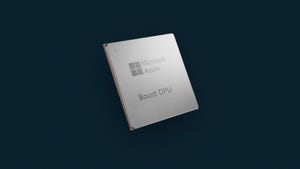
Insight and analysis on the data center space from industry thought leaders.
Flexible modern data centers demand flexible PDUs
Data center managers need to prepare for increasing power density as well as more challenging and non-standard environments.
September 13, 2018

Data center workloads are changing faster than ever, and data center managers need to prepare for increasing power density as well as more challenging and non-standard environments that will inevitably come.
Developments in compute, storage, and network hardware architecture and a wider range of complex workloads demand configurations that are increasingly variable, from hybrid cabinets that mix storage and compute, to hyperconverged infrastructure and a more heterogeneous mix of server architectures and hardware accelerators (from GPU to FPGA). Test labs to validate these new combinations have to support equipment changes even more often. For colocation facilities that supply the rack power infrastructure, it’s an ongoing challenge to predict the quantity and mix of outlets their customers will require.
Planning the mix of C13 and C19 outlets for a cabinet you’re deploying today for a known workload is one thing, but the turnover of equipment and changing workloads mean there’s no guarantee that same mix of outlets will be suitable for future uses. Power distribution units have a longer lifespan than servers and networking gear that may be retired after two to five years. Power monitoring helps with capacity planning but finding a rack with the spare power capacity to take new hardware isn’t much use if it doesn’t have the right outlets.
With so much flexibility required, having to plan around fixed numbers of two different outlet types in equipment cabinets is an added - and often expensive - complication data center managers don’t need.
The solution is the new hybrid Cx outlet in Server Technology’s latest High-Density Outlet Technology (HDOT) PDUs. The hybrid outlet accepts C14 or C20 cords with no extra components required, streamlining capacity planning, future proofing cabinets and still leaving space for proper cable management.
When you’re outfitting cabinets with a pair of intelligent power strips that cost $1000 - $3000 each, you don’t want to have to retire functional power equipment just because it has the wrong mix of outlets or waste your hardware budget by reselling it at a loss. Overprovisioning to make sure you have enough of the right outlets for future needs is an option, but it’s expensive and the larger PDU’s consume more space; you can spend 30% to 50% more than you need to for outlets that you may never fully utilize in individual racks. Adaptor cables that let you convert C19 outlets to C13 outlets is an option, but it’s another component you have to stock and keep track of, and those larger, heavier power cords can block the airflow and undo all the work you’ve done to achieve better power density. In some locations adaptors even break electrical codes, and they certainly make it harder to have the clean cable management you need for well-organized cabinet layouts.
Buying intelligent power strips with hybrid outlets that adapt as equipment evolves lets you apply the same principles of software-defined, composable architecture for zero-touch provisioning of your power distribution system, with full DCIM integration. Hybrid outlets are also the perfect match for lights-out, hands-off data centers in the kind of remote locations organizations will have to use to achieve 5G footprints for edge computing.
Even in more traditional data centers, having one PDU for all cabinet configurations instead of two or three different models means data center managers don’t need to keep spares of multiple units or invest in training personnel to service different systems. That leaves more time and budget to concentrate on monitoring, remote configuration and automation.
Sponsored by: Server Technology
About the Author
You May Also Like




.jpg?width=300&auto=webp&quality=80&disable=upscale)


